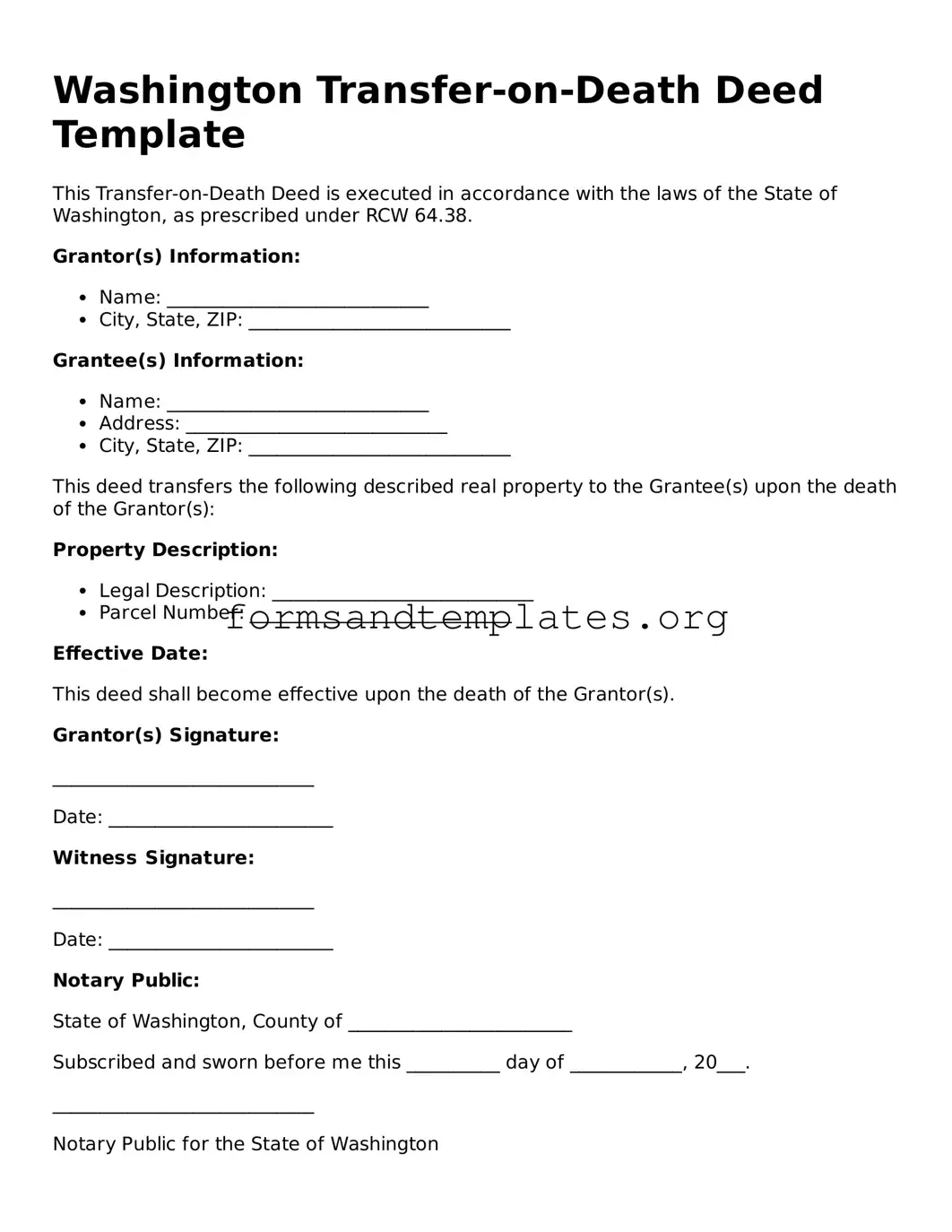Washington Transfer-on-Death Deed Template
This Transfer-on-Death Deed is executed in accordance with the laws of the State of Washington, as prescribed under RCW 64.38.
Grantor(s) Information:
- Name: ____________________________
- City, State, ZIP: ____________________________
Grantee(s) Information:
- Name: ____________________________
- Address: ____________________________
- City, State, ZIP: ____________________________
This deed transfers the following described real property to the Grantee(s) upon the death of the Grantor(s):
Property Description:
- Legal Description: ____________________________
- Parcel Number: ____________________________
Effective Date:
This deed shall become effective upon the death of the Grantor(s).
Grantor(s) Signature:
____________________________
Date: ________________________
Witness Signature:
____________________________
Date: ________________________
Notary Public:
State of Washington, County of ________________________
Subscribed and sworn before me this __________ day of ____________, 20___.
____________________________
Notary Public for the State of Washington
My commission expires: ________________________
